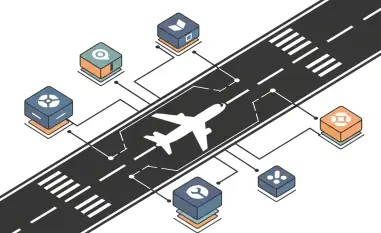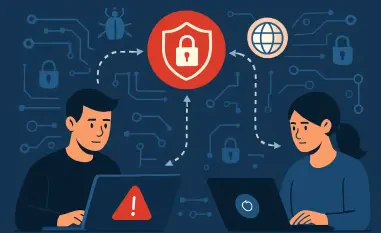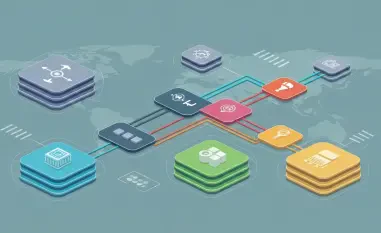Cyber Risk Quantification (CRQ) is becoming an essential tool for modern businesses, enabling them to express risk exposure from interconnected digital environments in monetary terms. This approach helps organizations understand the financial impact of cyber risks, prioritize risk management decisions, and communicate effectively with business leaders. Despite its benefits, the adoption of CRQ faces several challenges. This article explores the methods, benefits, and roadblocks of CRQ adoption, providing insights into best practices for successful implementation.
The Importance of Cyber Risk Quantification
Enhancing Communication with Business Leaders
Quantifying cyber risk in monetary terms bridges the gap between technical cybersecurity teams and business leaders. By translating technical risks into financial language, CRQ facilitates better understanding and decision-making at the executive level. This alignment ensures that cybersecurity investments are prioritized based on their potential impact on the organization’s bottom line.
Business leaders often struggle to grasp the intricate details of cyber threats and the necessary actions for mitigation. CRQ simplifies this process by presenting risks as potential financial losses or gains, making it easier for leaders to allocate resources appropriately. This not only enhances the dialogue between cybersecurity professionals and executives but also fosters a culture of informed decision-making where security measures are assessed for their business value.
Aligning with Enterprise Risk Management
CRQ integrates cybersecurity into the broader enterprise risk management framework. This alignment helps organizations manage all types of risks cohesively, ensuring that cyber risks are considered alongside other business risks. By doing so, companies can allocate resources more effectively and develop comprehensive risk mitigation strategies.
A unified approach to risk management allows organizations to see the bigger picture and understand how cyber threats intertwine with operational, financial, and reputational risks. When cyber risks are quantified in monetary terms, they can be compared directly with other risks the organization faces, facilitating a more balanced and strategic resource allocation. This holistic view enables businesses to develop robust mitigation strategies that address the full spectrum of risks and enhances their overall resilience.
Use Cases for CRQ Data
Cyber Insurance Procurement
One of the primary use cases for CRQ data is in the procurement of cyber insurance. By quantifying potential losses from cyber incidents, organizations can negotiate better insurance premiums and coverage terms. This data-driven approach ensures that companies are adequately protected against financial losses resulting from cyber threats.
Insurance providers consider many factors when setting premiums and coverage limits, and CRQ data provides tangible, quantifiable evidence of an organization’s risk landscape. Armed with this information, organizations can demonstrate their commitment to understanding and managing cyber risks, often leading to more favorable insurance terms. This not only helps in securing comprehensive coverage but also in managing insurance costs more effectively.
Compliance Reporting and Risk Prioritization
CRQ data is invaluable for compliance reporting and risk prioritization. Regulatory requirements often mandate detailed risk assessments, and CRQ provides a structured way to meet these obligations. Additionally, by quantifying risks, organizations can prioritize their cybersecurity efforts, focusing on the most significant threats to their operations and reputation.
In the realm of compliance, CRQ data supports meeting stringent regulatory standards, such as those outlined in frameworks like GDPR, HIPAA, and the ISO/IEC 27001. By converting complex technical risks into clear financial metrics, organizations can create detailed, understandable risk reports that satisfy regulatory requirements. This methodical approach enhances transparency and accountability, ensuring that all regulatory expectations are met with precision.
Benefits of CRQ Adoption
Increased Board and Leadership Confidence
Adopting CRQ enhances board and leadership confidence in the organization’s cybersecurity posture. By presenting risks in financial terms, security teams can demonstrate the value of their efforts and justify budget requests. This increased confidence leads to more informed decision-making and stronger support for cybersecurity initiatives.
When risks are contextualized in a language that business leaders understand—monetary impacts—their engagement and commitment to cybersecurity initiatives grow significantly. This financial perspective helps leaders appreciate the tangible benefits and ROI of cybersecurity investments, compelling them to support and fund necessary security measures. Consequently, this trust and support pave the way for a fortified and proactive cybersecurity culture across the organization.
Improved Risk Remediation and Understanding
CRQ provides a clearer understanding of cyber-risk exposure, enabling organizations to address vulnerabilities more effectively. By identifying the financial impact of specific risks, companies can prioritize remediation efforts and allocate resources to the most critical areas. This targeted approach improves overall risk management and reduces the likelihood of significant financial losses.
With a detailed, quantitative picture of where the most significant risks lie, organizations can focus their efforts on mitigating the threats that pose the greatest financial danger. This precise allocation of resources not only enhances the efficacy of risk management programs but also enables efficient use of budgets. Prioritizing high-impact vulnerabilities ensures that mitigation actions are both strategically and financially sound, leading to improved resilience and a reduction in potential financial damage from cyber incidents.
Roadblocks to CRQ Adoption
Challenges in Understanding and Trusting CRQ Analyses
Despite its benefits, many organizations struggle with understanding and trusting CRQ analyses. The methodologies used in CRQ can be complex and subjective, leading to skepticism among stakeholders. To overcome this challenge, organizations need to invest in training and education to build confidence in CRQ processes and outcomes.
Building a robust CRQ framework requires transparency and clarity around the methodologies used and the assumptions made during the analysis. Organizations can host workshops, training sessions, and continuous education programs to demystify CRQ processes for all relevant stakeholders. Developing this shared understanding encourages trust in the data and facilitates more efficient and cooperative risk management practices, ultimately making CRQ an accepted and integral part of the business strategy.
Scoping Issues and Lack of Automation
Scoping issues and a lack of automation are significant barriers to CRQ adoption. Defining the scope of CRQ projects can be challenging, and manual processes can be time-consuming and prone to errors. Implementing automated tools and technologies can streamline CRQ efforts, making it easier to collect and analyze data accurately.
Automation can significantly reduce the labor and time required for CRQ by standardizing data collection and processing. Advanced analytical tools and platforms can help redefine the CRQ landscape, making it more scalable and accessible. By harnessing automated solutions, organizations can not only streamline their CRQ operations but also ensure consistent, accurate, and reliable risk quantification, thus enhancing the overall efficiency and reliability of their cybersecurity risk management programs.
Best Practices for Analyzing and Using CRQ Data
Starting Small and Focused
Experts recommend starting small and focused when implementing CRQ. By defining clear goals and data requirements, organizations can avoid overwhelming complexity and ensure that their initial efforts are manageable. This approach allows companies to build a solid foundation for CRQ and expand their efforts over time.
Starting with a specific, well-defined project helps organizations to develop their CRQ capabilities without being daunted by the full-scale complexity of comprehensive risk quantification. This pilot approach allows teams to learn, adapt, and refine their processes based on initial feedback and results. As the foundational CRQ practices become more entrenched, organizations can gradually broaden the scope, eventually building a robust, enterprise-wide CRQ program.
Prioritizing Asset Inventory and Regular Updates
Maintaining an accurate and up-to-date asset inventory is crucial for effective CRQ. Organizations should prioritize asset inventory management and regularly update their lists to reflect changes in their digital environments. This practice ensures that CRQ analyses are based on current and relevant data, leading to more accurate risk assessments.
Accurate asset inventories enable organizations to have a precise understanding of their risk landscape, ensuring that all CRQ calculations reflect the most current state of the enterprise’s digital assets. Routinely updated inventories capture new vulnerabilities and threat vectors as they emerge, allowing for timely adjustments in risk management strategies. This dynamic approach strengthens the overall validity and reliability of CRQ data, ensuring that decisions based on these assessments are both relevant and strategic.
Aligning Cyber with Enterprise Risk Management
Aligning CRQ with enterprise risk management is essential for a holistic approach to risk management. By integrating cyber risks into the broader risk framework, organizations can ensure that all risks are considered and managed cohesively. This alignment helps in making informed decisions and developing comprehensive risk mitigation strategies.
Incorporating cyber risks within the enterprise risk management framework allows for a seamless and unified risk reporting structure, facilitating better communication among different risk management teams and promoting a synchronized response to diverse threats. This integrated approach highlights interdependencies among various risk categories and promotes the development of risk strategies that encompass both cyber and non-cyber risks, thus reinforcing an organization’s overall risk resilience.
Demonstrating Value to Leadership
To gain support for CRQ initiatives, it is crucial to demonstrate their value to leadership. By presenting clear and compelling data on the financial impact of cyber risks, security teams can justify their efforts and secure necessary resources. This demonstration of value builds confidence in CRQ and encourages broader adoption within the organization.
Illustrating positive outcomes such as enhanced risk mitigation, financial savings, and improved compliance through concrete CRQ data can transform leadership perception, turning them from skeptics to advocates. Detailed reports and visual aids depicting potential financial impacts minimized by effective CRQ practices can solidify leadership commitment, ensuring sustained backing and resources for ongoing cybersecurity risk management efforts.
Informing New Technology Adoption Decisions
CRQ data can inform decisions about adopting new technologies. By assessing the potential risks and financial impact of new technologies, organizations can make more informed choices about their implementation. This proactive approach helps in mitigating risks associated with new technology adoption and ensures that investments are aligned with business objectives.
Before deploying new solutions, CRQ data allows businesses to understand the full spectrum of risks associated with new technologies, including potential vulnerabilities and compliance issues. This informed approach enables organizations to preemptively address these challenges, ensuring that any new technology adopted not only enhances operational efficiency but also aligns with the company’s broader risk management strategy. This foresighted planning minimizes disruptions and leverages new technologies to their fullest potential while maintaining robust security standards.
Using CRQ Data to Negotiate Cyber Insurance Premiums
CRQ data is a powerful tool for negotiating cyber insurance premiums. By quantifying potential losses and providing in-depth risk assessments, organizations can demonstrate their cybersecurity posture to insurers. This quantitative evidence allows them to negotiate better coverage terms and more favorable premiums, ensuring comprehensive and cost-effective protection against cyber threats.
Insurance providers use detailed risk profiles to evaluate an organization’s likelihood of experiencing a cyber incident. By presenting robust CRQ data that outlines potential financial impacts and existing risk mitigation measures, organizations can effectively communicate their commitment to cybersecurity. This demonstration not only aids in securing more favorable insurance terms but also promotes a continuous improvement cycle, where risk quantification and management enhance both cybersecurity postures and financial protection mechanisms.
Conclusion
Cyber Risk Quantification (CRQ) is increasingly vital for modern businesses, allowing them to translate the risks associated with interconnected digital environments into monetary terms. By understanding the financial impact of cyber risks, organizations can prioritize risk management decisions more effectively and communicate these priorities to business leaders. This process of quantifying cyber risks enables companies to make well-informed decisions about where to allocate resources to mitigate potential losses.
However, despite the clear benefits, several obstacles hinder the widespread adoption of CRQ. These challenges include a lack of standardization in risk assessment methodologies, limited availability of quality data, and the complexity of quantifying certain types of cyber risks. Organizations may also face internal resistance due to the perceived difficulty and cost of implementing CRQ systems.
This article delves into the various methods and models used for CRQ, highlighting both the advantages and the barriers to its adoption. It offers insights into best practices for successfully integrating CRQ into business strategies, including the need for continuous monitoring, collaboration between different departments, and investment in training and technological tools. Understanding these elements can help businesses overcome the hurdles associated with CRQ and reap the full benefits of a robust cyber risk management framework.













